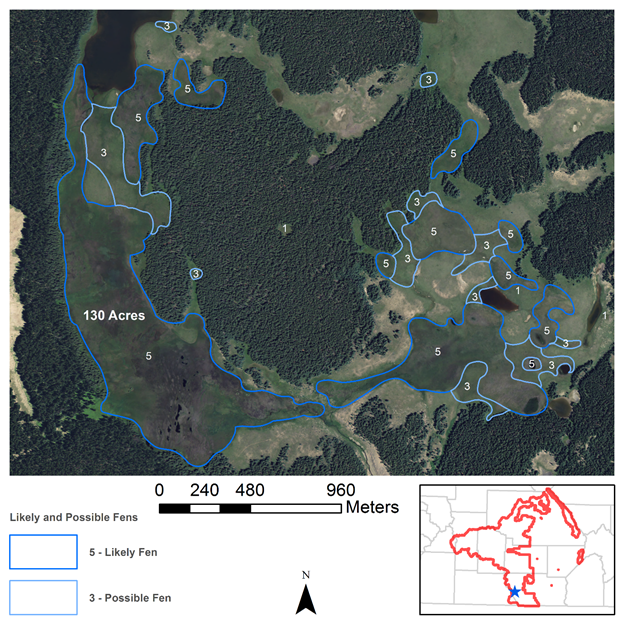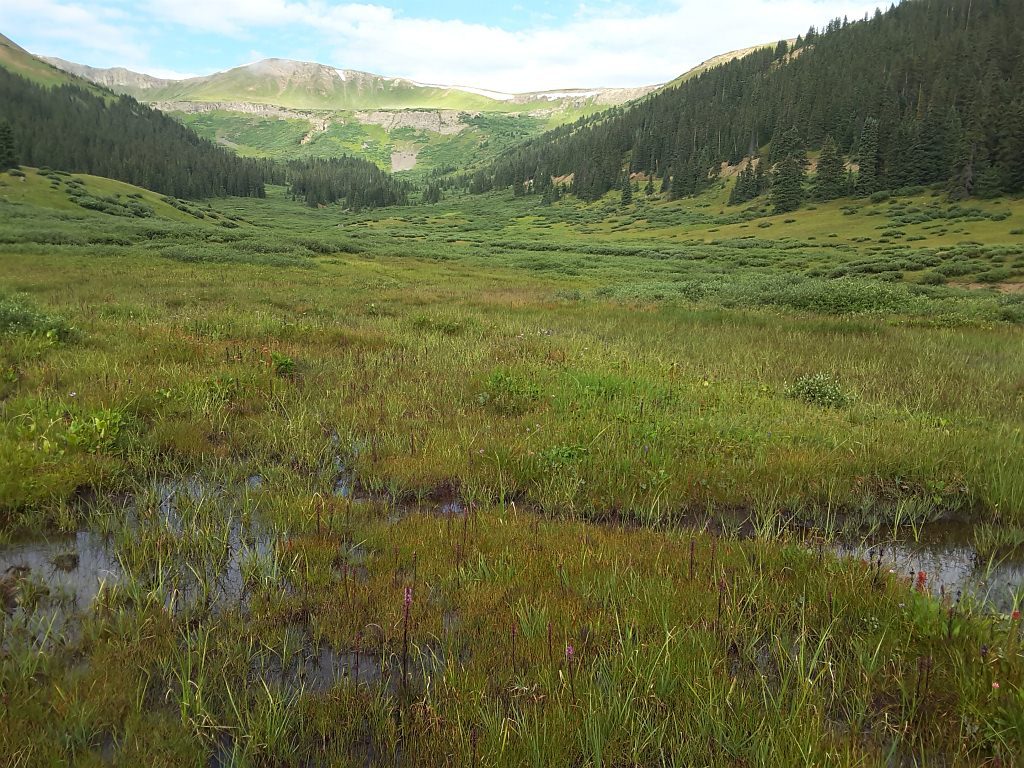Fens are groundwater-fed wetlands with organic soils that typically support sedges and low stature shrubs and often host rare plants and animals. In the mountain west, organic soil formation can take thousands of years and long-term maintenance of fens requires protection of both hydrology and plant communities. Given the sensitivity of fens, they are a high priority for conservation and restoration. However, few land management agencies have a complete inventory of fens within their lands.

To fill this data gap, CNHP is mapping fens through aerial photo interpretation for both the U.S. Forest Service (USFS) and the Colorado Department of Transportation (CDOT) through a series of contracts that includes mapping fens in multiple states across the West. For each project, potential fens are identified from digital aerial photography. Each potential fen polygon is hand-drawn in ArcGIS based on the best estimate of fen boundaries and is attributed with a confidence value of 1 (low confidence), 3 (possible fen) or 5 (likely fen). CNHP photo interpreters rely on multiple image sources, as well as ancillary data such as topographic maps and wetland mapping form the National Wetlands Inventory.

Data from these projects show that fen density is strongly related to elevation and landforms. In general, fens are concentrated between 9,000–12,000 ft. in the subalpine zone. Fens form at the base of slopes, on valley margins, and in old kettle ponds. Geospatial data on fen locations will help both USFS and CDOT avoid potential impacts and target rare plant surveys in these important wetland habitats. The video below explains how the USFS is using CNHP's fen mapping data to inform management.

All fen mapping by CNHP in Colorado has been combined with addition fen mapping datasets into one seamless map of Colorado fens. See the Wetlands Mapper to access the data.
Left-click to view, and right-click to download.
Below are links to Fen Mapping Reports
- Colorado Department of Transportation Roadside Fen Inventory
- Fen Mapping for the Bridger-Teton National Forest
- Fen Mapping for the Dixie National Forest
- Fen Mapping for the Ashley National Forest
- Fen Mapping for the Manti-La Sal National Forest
- Fen Mapping for the Salmon-Challis National Forest
- Fen Mapping for the Rio Grande National Forest
- Wetland Mapping and Fen Survey in the White River National Forest 2011
- San Juan National Forest Botanical Survey of Fens




